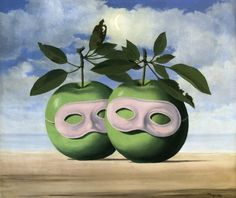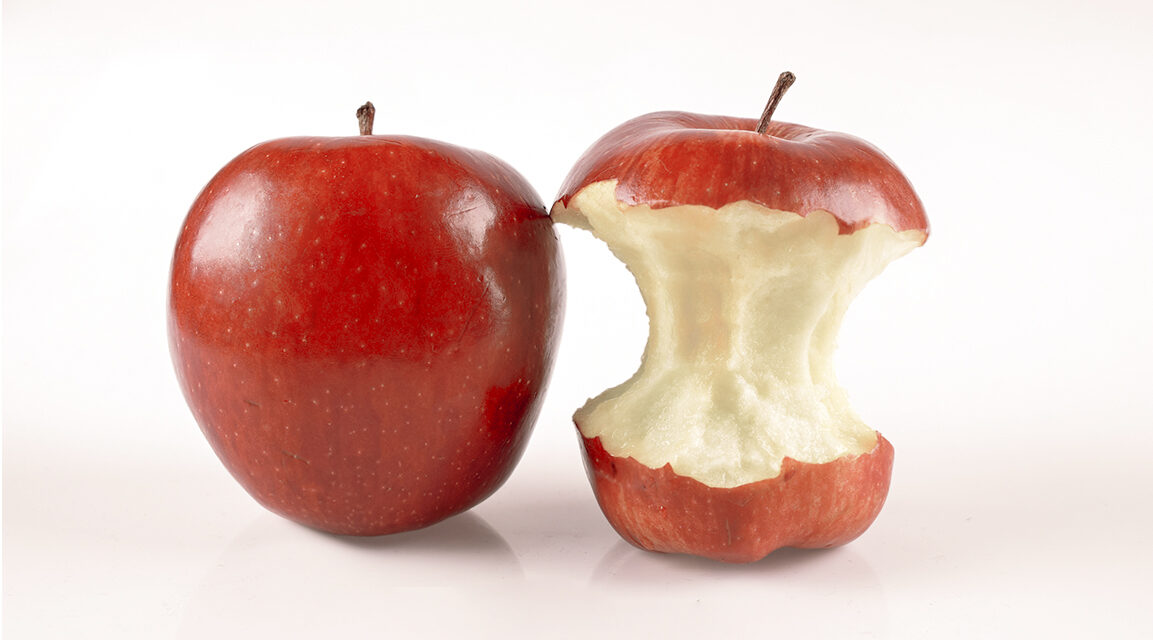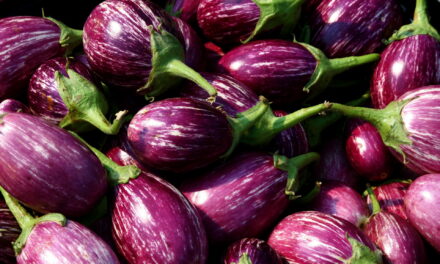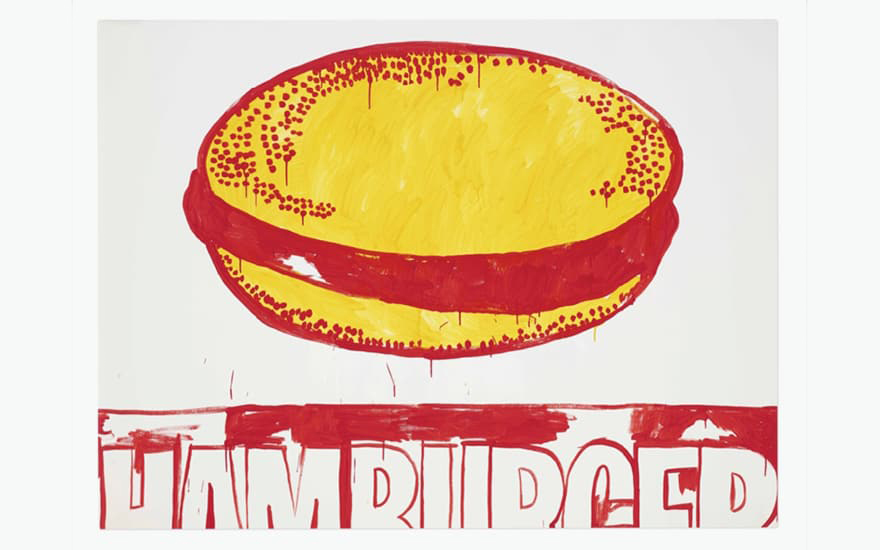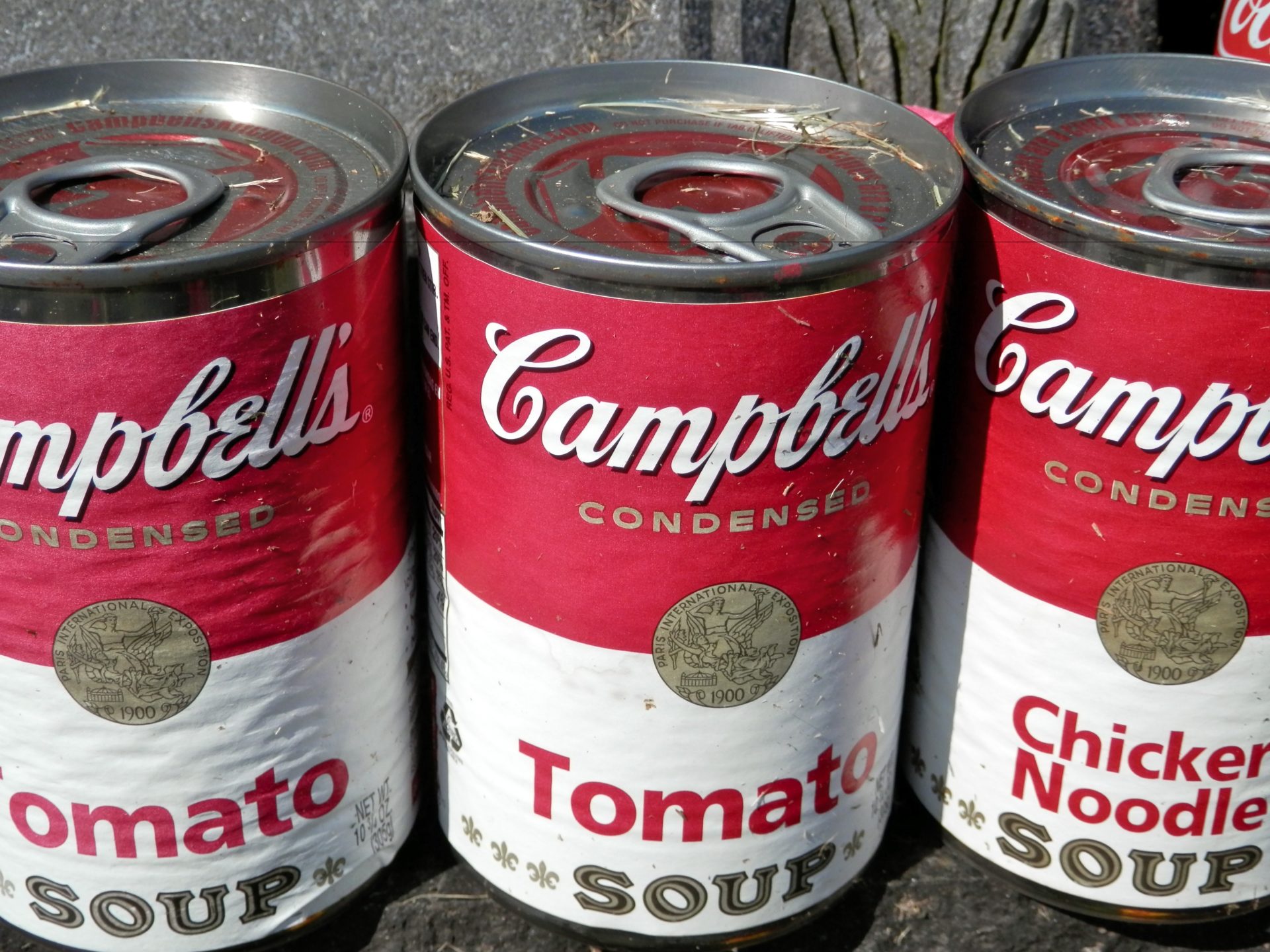Apples to Infinity: Love, Magic, Candy
“Ceci n’est pas une pomme,” claimed Belgian artist Rene Magritte in his 1964 painting of an apple.
We already knew the trick, of course, from his work The Treachery of Images, which featured a pipe and claimed “this is not a pipe.”
The joke, or secret, was that the pipe was not a pipe. It was picture of a pipe.
Well, put that into your pipe and smoke it!
Here’s another trick question.
What has more sugar than a can of soda and as much or more acid to quickly erode your teeth?
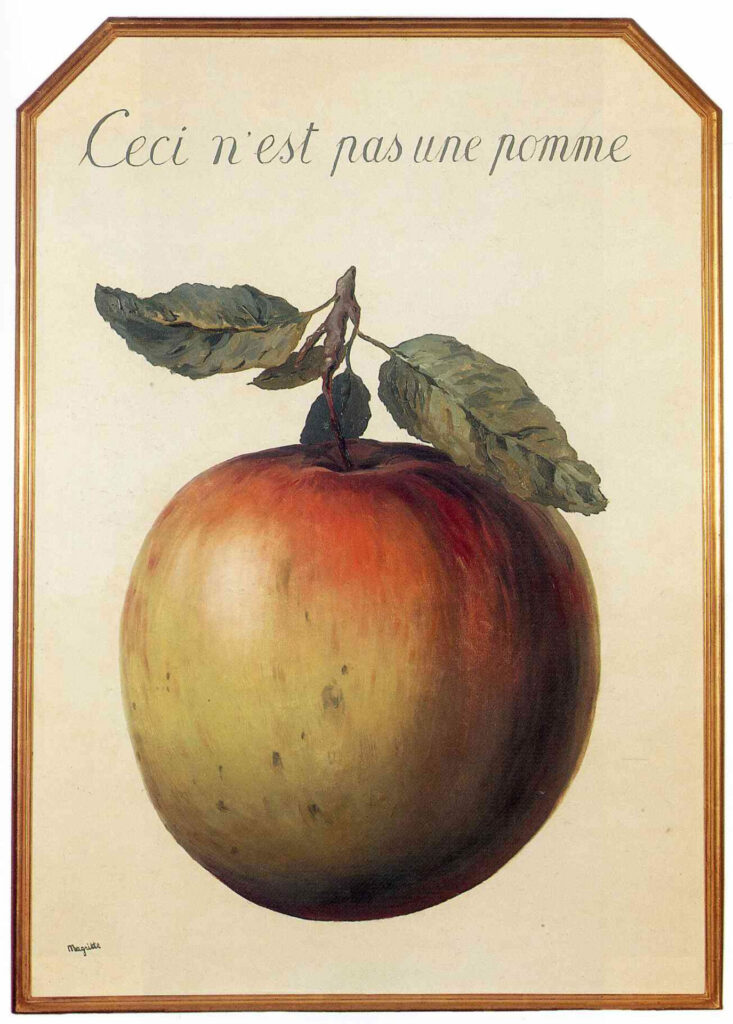
Say what? The apple? Worse than candy????
No doubt you grew up on the adage “an apple a day keeps the doctor away.” I did. I grew up in a Niagara apple orchard, where that sweet fresh must of apples covered the fields beside the proverbial idyllic babbling brook. Even in markets heaped with guava, mandarins, pomegranates and mangoes, the humble apple is my favourite fruit.
Fall is also my favourite season. Those crisp blue days and sunny skies make the perfect backdrop for orange leaves and red apples. Bushels piled up with those gorgeous globes, classics like McIntosh and Northern Spy, cheerful Mutsu, the exquisitely textured Empire and Spartan varieties, golden russets, and more.
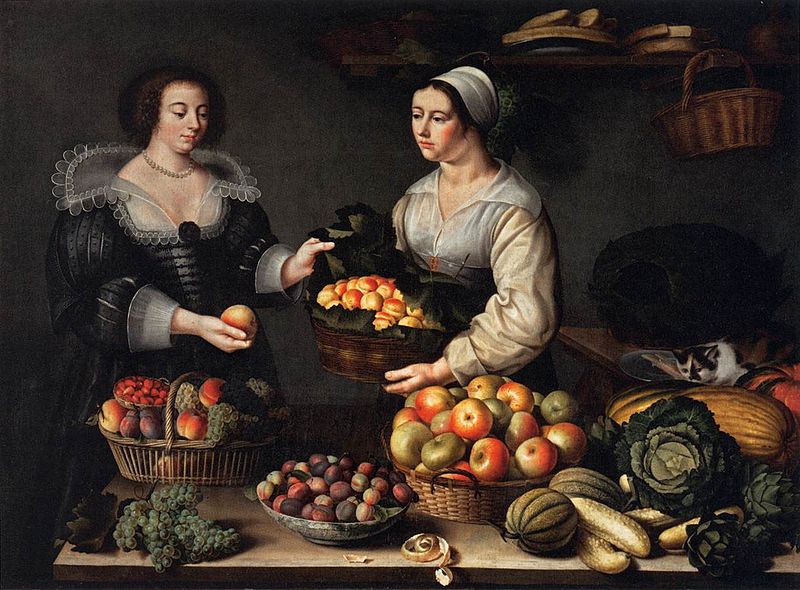
The Fruit and Vegetable Monger, by Louise Moillon 1631
Fall means polishing up apples for back to school lunches and the teacher’s desk, book fairs with candy apples galore, and barn parties with hayrides, spiked apple cider, square dancing and games like bobbing for apples.
Apples feel homegrown and local to us, so local that our neighbours often say, “American as apple pie.” The fruits thrive in many parts of Canada and the United States. But their earliest known roots take us to Central Asia, east of the Caspian Sea. The capital of Kazakhstan, Alma Ata, means “full of apples.” They were cultivated by ancient Greeks, Etruscans, and Romans as well, after leaving Kazakhstan via the bellies of birds and bears. Kazakhstan still has wild apple forests, now protected, the last in the world.
While we here are familiar with Cortland and Ida Red and Honeycrisp, there are tens of thousands of apple varieties around the world. The Red Delicious is the globe’s most popular of the 100 or so commercially available, although it’s rolling to the bottom of the barrel in Canada.
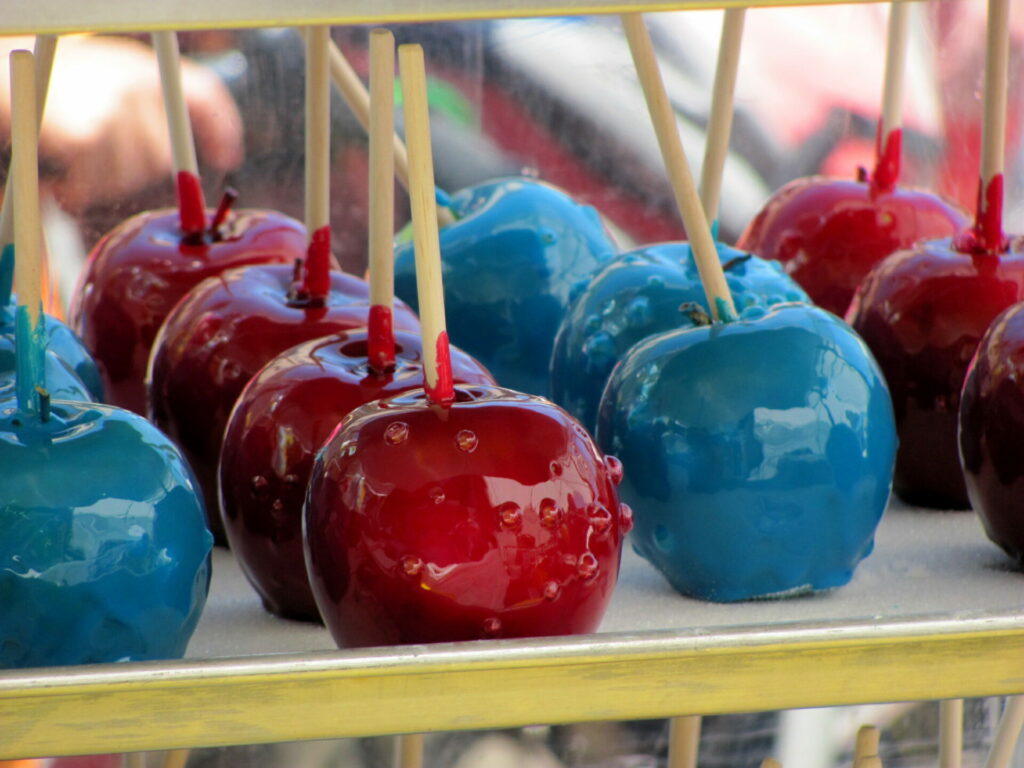
RichardBH from Hamilton, Canada, CC BY 2.0 via Wikimedia Commons
In my opinion, the ordinary apple reigns over all the more exotic fruit contenders, despite their sweet tendrils, rainbow juices, and fine feathers. The apple has a sturdy beauty and a hearty portability. Its satisfying crunch and moderate flavours make it versatile and serviceable for the long haul. Day in and day out, year after year, the apple is evergreen.
Apples have a reputation for granting glowing health to those who chomp routinely. They are the very definition of natural. Everyone knows they are abundant with nutrients, fibre, and antioxidants. Your cheeks will glow like those apples! You will poop effortlessly! You won’t ever need a doctor!
The American Heritage Dictionary of Idioms traces the earliest known version of “an apple a day” to 1630. But “apple” meant “round fruit” and the idiom was figurative, more along the lines of “an ounce of prevention is worth a pound of cure.” A more literal interpretation came later, with British and North American farmers hoping to attract more attention to their produce. Much of the apple’s wholesome lore comes directly from government and agricultural advertisements.
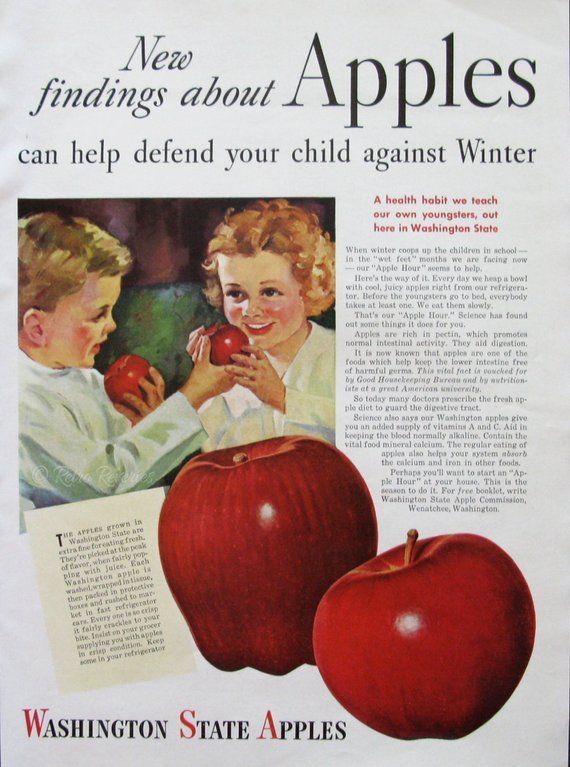
ad from 1938
In fact, the apple is not the nutritional powerhouse we believe it to be, and health stories online veer toward hype. The apple has fairly low levels of micronutrients, and even a big one has a paltry one to five percent of the day’s target levels of a mere handful of vitamins and minerals.
There are moderate doses of pectin, a helpful prebiotic fibre that contributes to a flourishing microbiome. And there is quercetin, a plant flavonoid that reduces inflammation, benefits blood pressure, and boosts the immune system. But apples have just a few milligrams per 100 gram serving- cherries have at least three times as much, and so does lettuce! An onion has nine times as much as an apple.
The apple does best at Vitamin C, with a big one giving you ten percent of your DV. An orange or raw pepper, however, weigh in at around 100%!
Considering that we equate apple eaters with healthy bowel habits, it’s also surprising that they are not particularly high in fibre. They make a moderate contribution to the day’s total fibre intake. A large apple boasts four or five grams if you eat the peel- and most people are aiming for 30 a day. Smaller apples have as little as two grams of fibre.
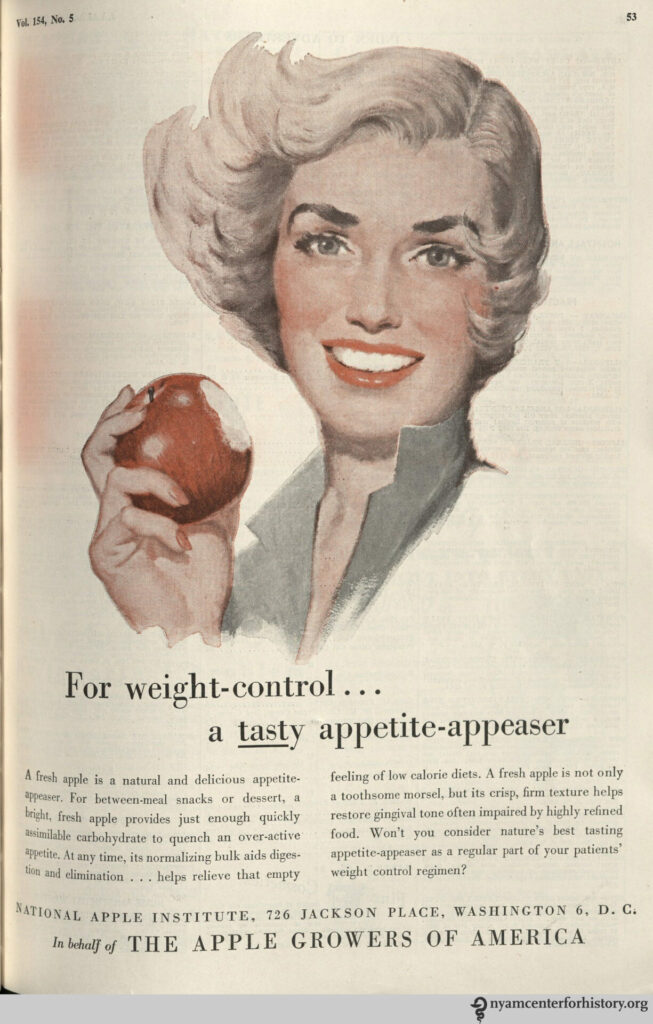
1954
Are our cherished beliefs about apples being the perfect dieter’s snack also to be shattered? Maybe. For about one century in history- the most recent one- fat was blamed for fat, a historical blip fast fading away as we return to the traditional knowledge that fat is a macronutrient, after all. Excess sugar has a much bigger impact on our weight, along with toxins and hormones.
Since apples contain no fat, they seemed perfect. Of course, sugar, too, is a plant with zero fat, and was once touted as a diet food! Many apples contain whopping amounts of sugar even when they don’t taste super sweet. A large apple can have more sugar than a can of soda!
The sugar content of modern apples is not especially natural. Ancient apples were plain or quite sour. Generations of breeding and splicing for flavour have intensified the sugar according to our sweet tooth. In the past decade or so alone, apples have doubled their sugar.
It gets worse.
Apples contain high levels of acid, and malic acid is especially brutal on tooth enamel. It is more corrosive than soda and can decalcify teeth that are regularly exposed to it.
To top it all off, the rumours are true- apple seeds are highly toxic and contain cyanide. If you eat enough of them, they can kill you. True, this is largely irrelevant since few of us gobble core and all. Swallowing a few seeds from time to time won’t do any harm unless you are super sensitive. Just don’t go out of your way to consume them.
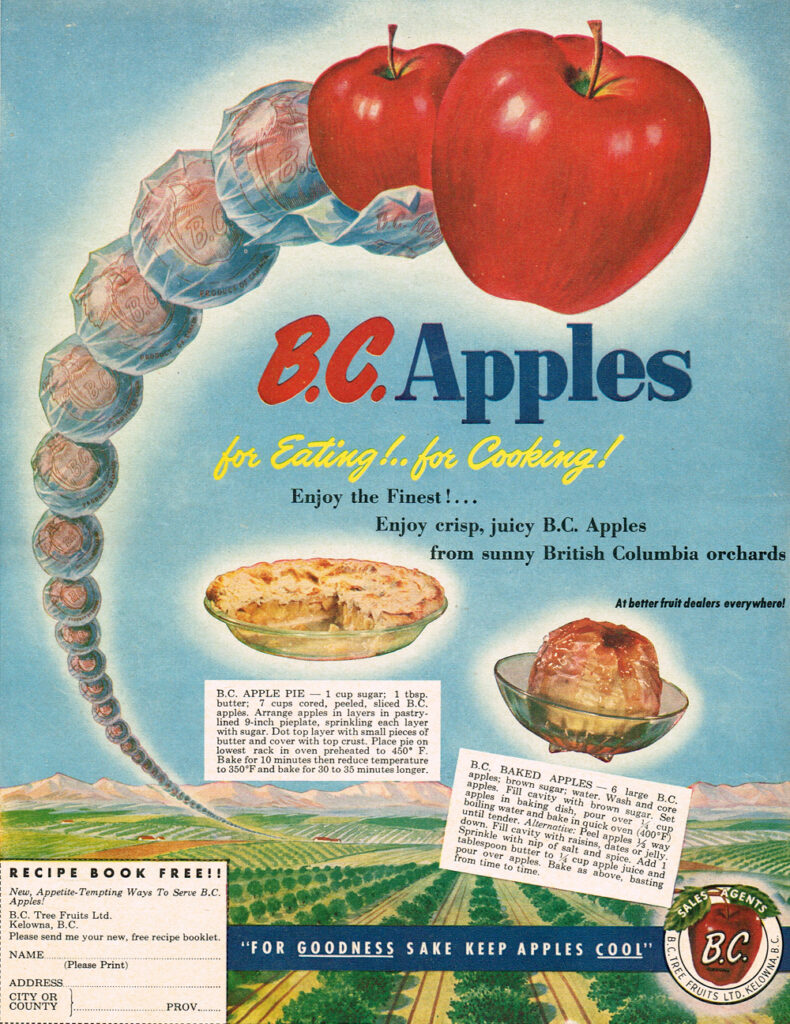
MacLeans ad 1950
And don’t be too dejected by my gritty realism and irreverence. I love apples with a passion and enjoy them regularly, especially in season because when their texture is crunchy, not pithy or mealy like the sad off-season offerings. While apples are not the mythic fruit of eternal youth they are sometimes sold to be, you could certainly do worse. They aren’t loaded with toxic chemicals and artificial flavours. So what if they aren’t keto friendly? Even the strictest carb watcher can choose a small apple without blowing their regimen.
Much taller tales have been told about apples. Some of their reputation for eternal life might be blamed on older myths, where they were imbued with all manner of magical powers and sacred symbolism. Remember way back, in the beginning, when the apple first grew on the tree of life?
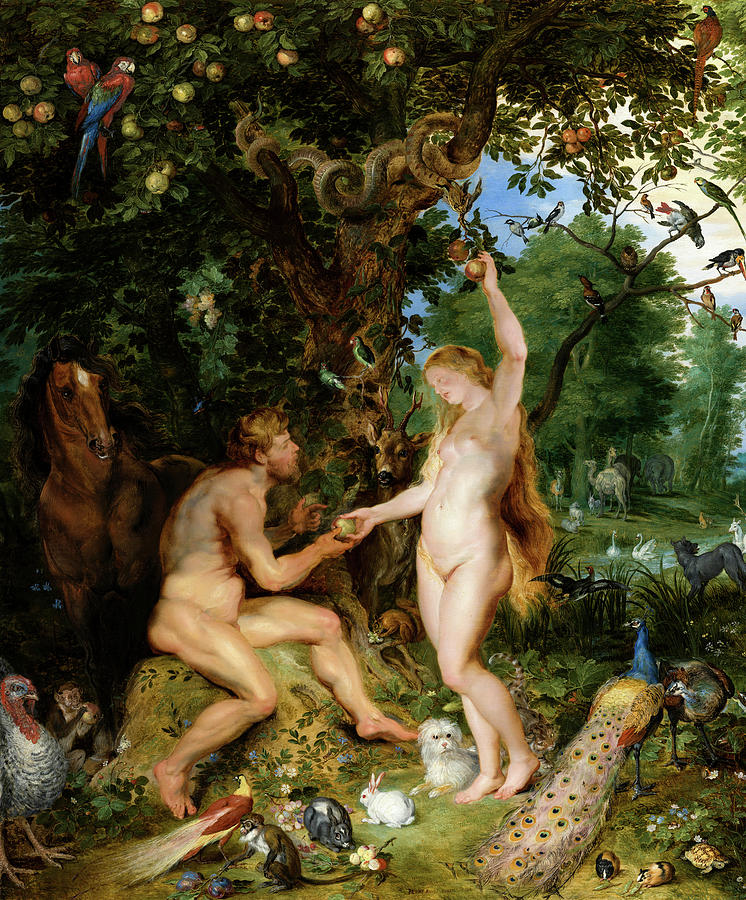
Jan Brueghel and Paul Rubens 1615
Nothing in the good book specifies that Eden’s poisonous fruit was an apple, but it’s the go-to assumption. Why? Because, Barbara Walker, scholar of esoteric history and myth explains in The Woman’s Encyclopedia of Myths and Secrets, “Eve’s fruit of knowledge used to be the Goddess’s sacred heart of immortality.” The apple as a symbol of resurrection actually appears in many paintings of the Madonna and Child, foreshadowing the wee lad’s future mission and eternal promise.
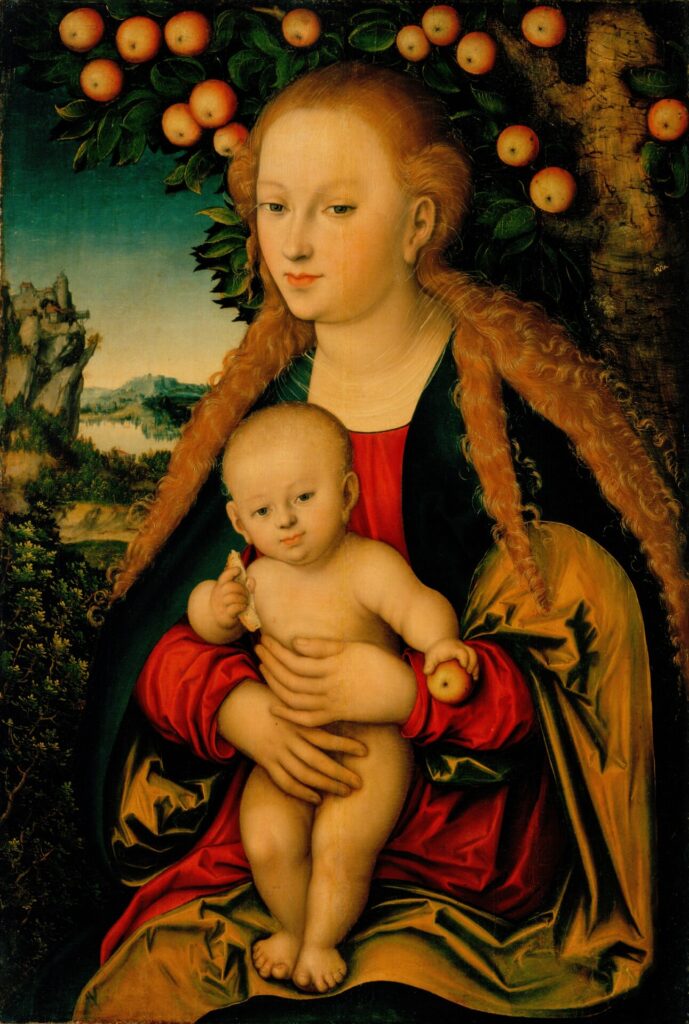
The Virgin and Child Under an Apple Tree, by Lucas Cranach 1530s
The fruit of the tree of life- and death- was widely revered throughout Mesopotamia, Europe, and beyond- as essential for resurrection and rebirth. In some cultures, people were buried with apples or vessels or artwork that featured apples.
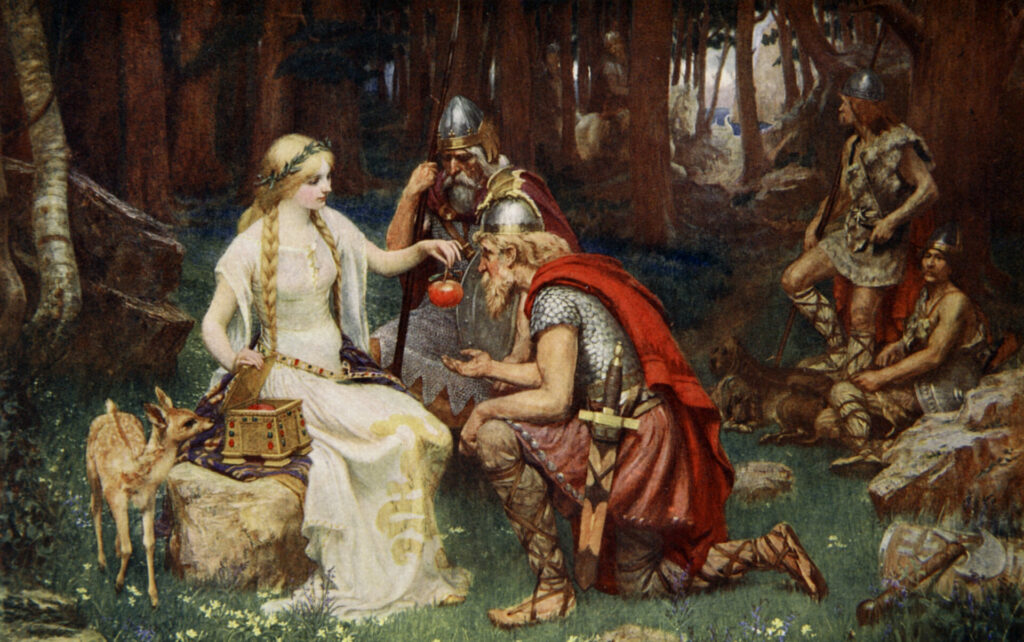
Idun And The Apples, by James Doyle Penrose 1890
Remember the serpent who scoffed, “You will not surely die,” when Adam and Eve protested? He claimed they would be like gods if they succumbed to the temptation of the apples. The Norse gods knew this easy trick to longevity- they simply ate from the apple orchards of Idun, and so they cheated death its due. The Greeks’ great mother Hera also had a magic garden of apples and a serpent played security guard in front of her tree of life. The Romans called their goddess of fruit Pomona, which gave way to the French word for apple, “pomme” and the English word “pomology” for the study of fruit.
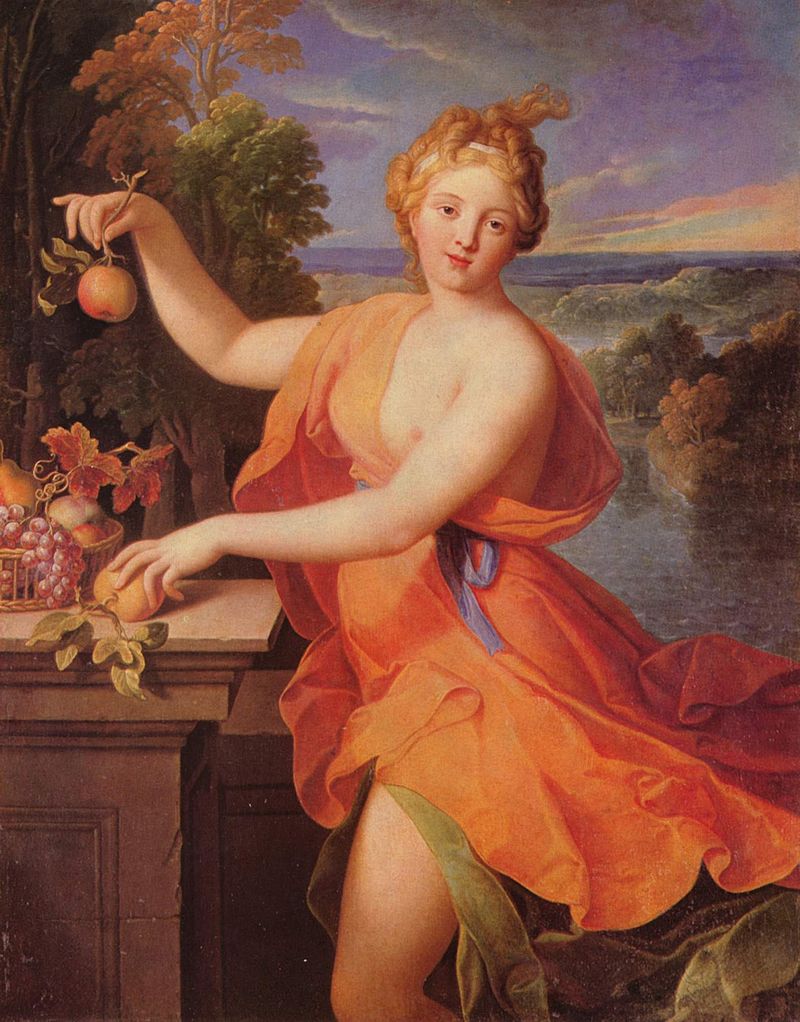
Pomona, by Nicolas Fouche 1700
Note that some theology considers the original sin to be sex rather than disobedience, and the apple is also an ancient symbol of love, and sexual temptation. Of course, life, death, rebirth and immortality overlap with sex, and “be fruitful and multiply” is an adage as old as the hills. Apples are associated with Aphrodite, the goddess synonymous with love. And the enchanting erotic poetry of Solomon in the Old Testament gushes, “Refresh me with apples, for I am sick with love.”
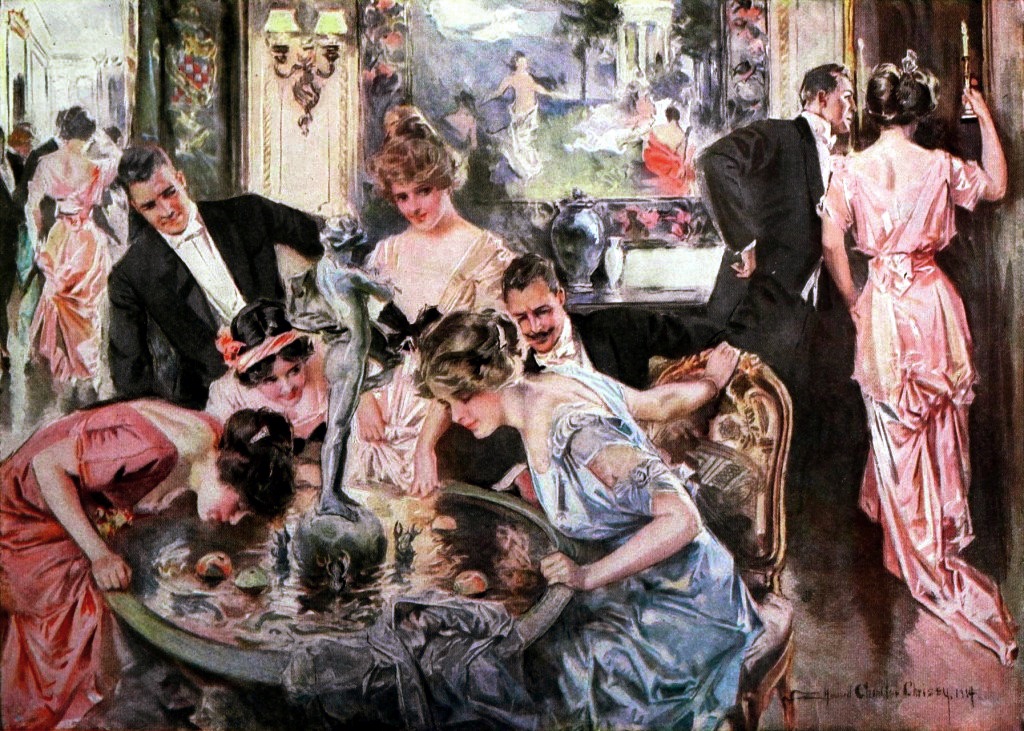
Christy’s Halloween, by Howard Chandler Christy 1916
Stories and meanings of various mythologies crisscross over time and place in a convoluted labyrinth that is impossible to decipher but fascinating nonetheless. Thousands of years later we land on a farm in Ontario’s southern peninsula, bobbing for apples, all the while invoking ancient rites. This rustic children’s game is associated with autumn parties, especially at Halloween, but few of us know it is a courting game from Ireland and Scotland, and a Samhain inheritance. The rites of the mythic witching days collided with the Roman festival of Pomona, and later apples magically exploded into 21stcentury Canadian fall fair pastimes.
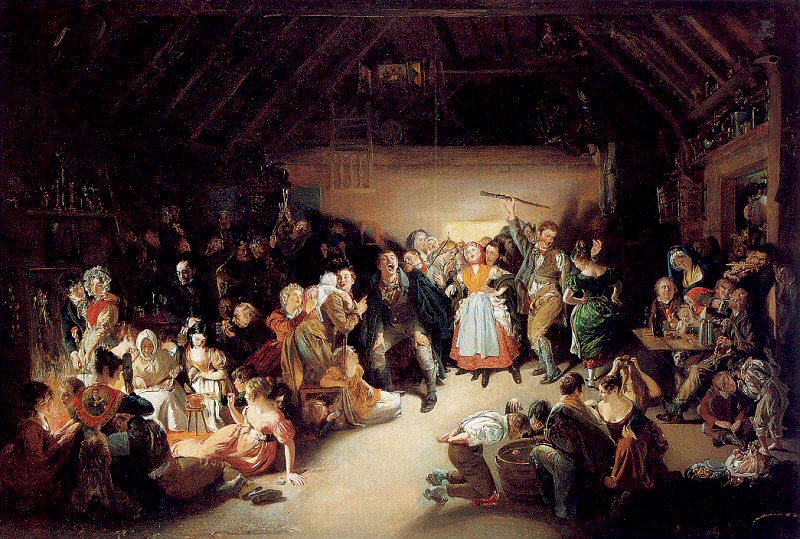
Snap Apple Night, by Daniel Maclise 1833, inspired by a Halloween party in Ireland.
A related game is the Cornish Allantide custom, where large, shiny apples were given as good luck gifts on October 31. Apples were also hung from strings while revelers tried to bite them. Apples were placed under the pillows of the single in hopes they would inspire prophetic dreams about future spouses.
All of this is just a bite of the bushel. Ukrainians have an Apple Feast of the Savior Day where they celebrate The Transfiguration in early fall. The mythic paradise island of Avalon translates into “apple island.” Other legends maintain that an apple on Halloween could spell out your future husband’s name in the peeled rind- or that you might see his face in the mirror.
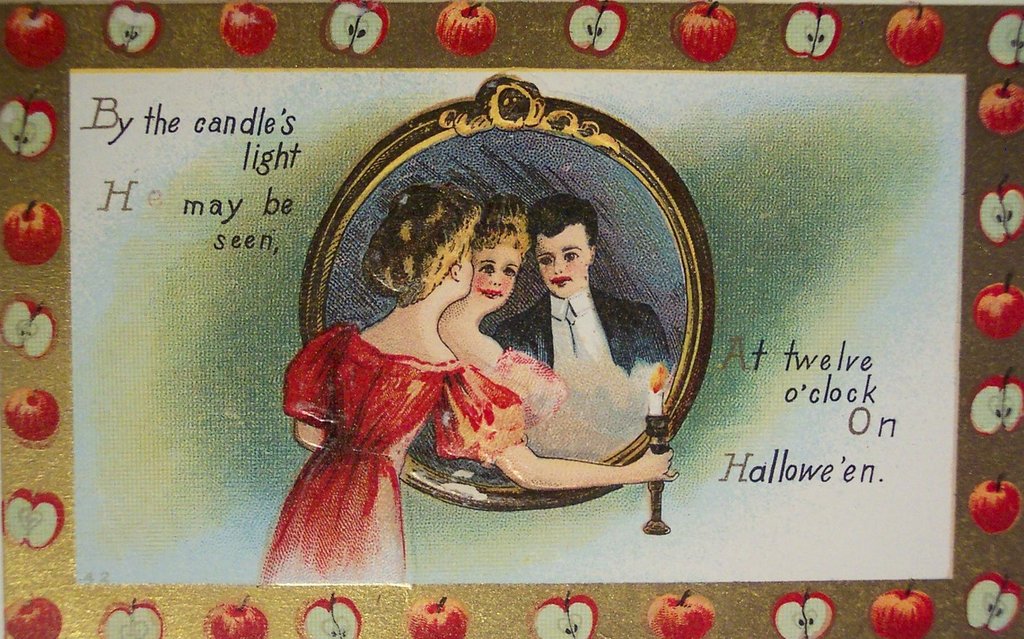
With reams of mythology, folklore, literature and art history to play with, is it any wonder that the apple was one of surrealist artist Rene Magritte’s recurring dreams? The Belgian painter loved to take everyday ubiquitous imagery and play around with it. He explored the apple from every angle over and over in countless works. There was the “this is not an apple” apple, and The Son of Man in a bowler hat, with a green Granny Smith obliterating his identity. There were quite a few works with apples wearing eye masks. There was a room with an Alice in Wonderland style oversize apple dwarfing the whole room, presumably after we imbibed a bit of the “drink me” temptation. There’s the man looking out over the mountains and watching a different giant Granny Smith hover over him in the clouds.
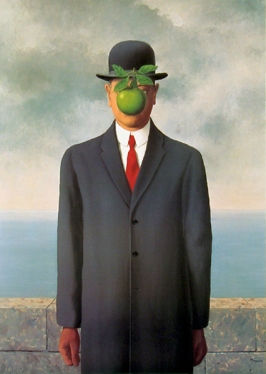
Son of Man, by Rene Magritte
While you contemplate these many mysteries, head out into the September sun in search of Canada’s national apple, the McIntosh. The beloved Mac is proof positive of the apple’s magic love spell. American farmer John McIntosh followed the apple of his eye to Canada in 1796. By the time he found her, she had died. But love prevails, and he married another woman, moving onto her brother in law’s land. There, old Mac discovered some mysterious apple seedlings on the land. He planted them closer to their house and the trees bloomed with a pleasing fruit that became a national treasure.
The Mac is becoming less popular today at home as crunchier fleshed varieties prevail over the marketplace. McIntosh is going the way of the Red Delicious. Even so, the Mac was once so legendary that the high tech legend Apple named its company after it, Macintosh Computers.
Magritte had already passed on by this time and never did paint the computing machine alongside eggs, locomotive trains, and burning tubas.
Perhaps he should have taken the immortal snack when it was offered to him. Don’t make the same mistake- teeth be damned! Pick up your favourites for apple crisp, apple pie, taffy apples, and plain old in-hand eating. Take that bite out of life! Who knows? You might find true love, or live forever.
Lorette C. Luzajic
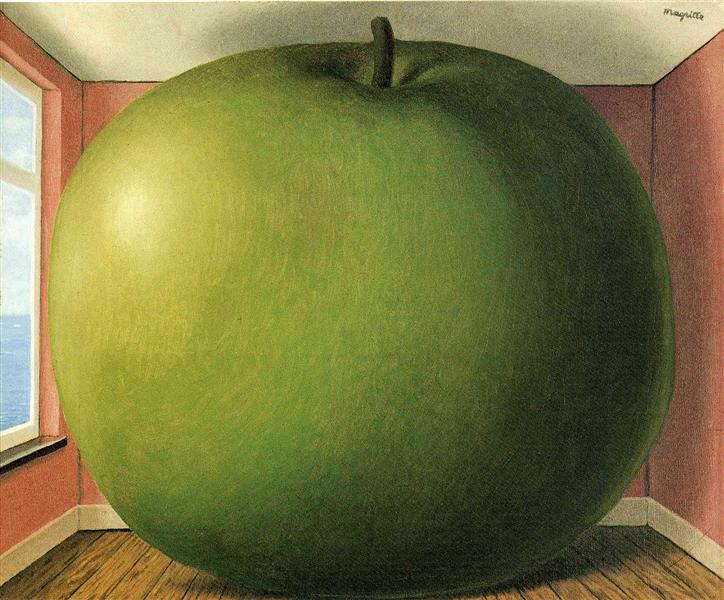
Rene Magritte
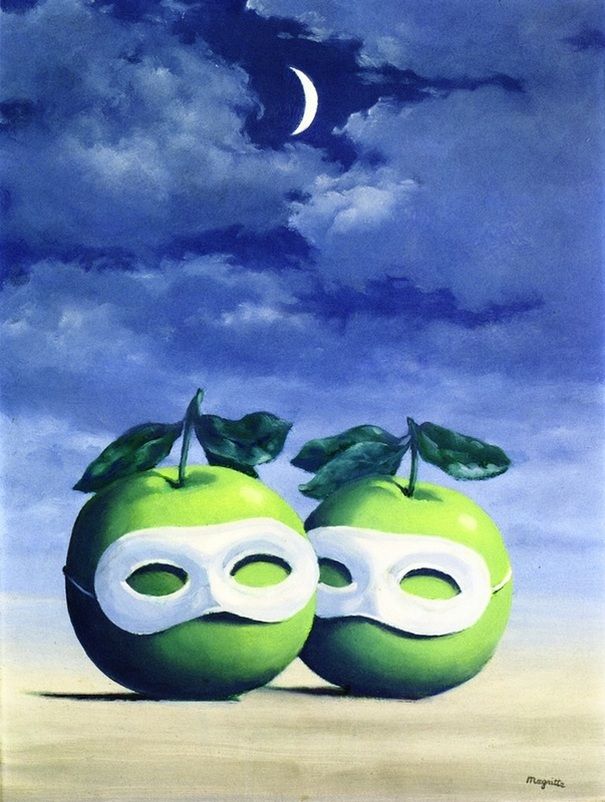
Rene Magritte
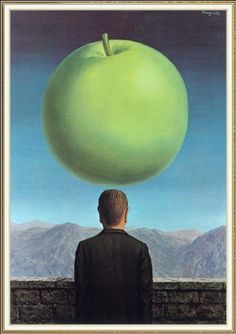
Rene Magritte
